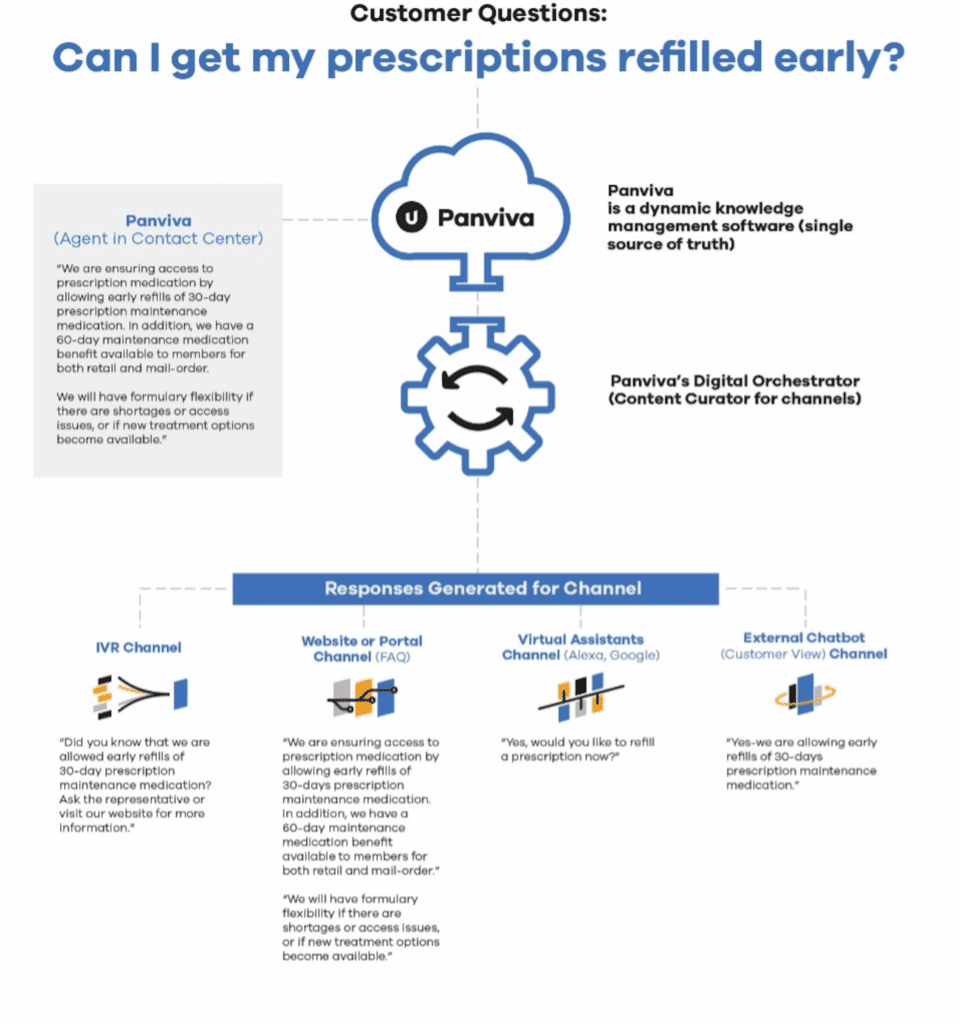A contact center executive we know is always looking for ways to improve her operation.
Topping her list are technologies that promise to improve the experiences of employees as well as customers.
Of all the promising technologies coming online, she’s been most interested in artificial intelligence. She has embraced it in whatever form it comes.
She’s implemented ASR (automatic speech recognition), computer speech recognition, and STT (speech-to-text) technologies.
But in addition to their predicted benefits, she’s discovered an unforeseen problem. How she solved that problem led to benefits across the organization.
Freeing call center agents for the hard problems
You’re already familiar with the promises of artificial intelligence in the call center. Voice-based banking, for example, solves the easiest customer issues quickly, without human intervention. Instead of helping customers with mundane inquiries such as account balances, payment due dates, transaction histories, or payments, human customer service representatives are free to handle the harder customer service questions.
Other customer service channels work similarly, resolving the easy questions by chatbot or email instead of time- and labor-intensive voice calls.
While it’s smart business to leave the harder problems to humans, it’s also a problem in itself. Hard problems take their toll on the people solving them. Solutions can be elusive, and callers can be impatient (to put it diplomatically).
Our contact center executive was wrestling with more and more cases of agent burnout. Training was taking longer. Job satisfaction was harder to sustain.
In an earlier era, before AI handled the easier questions, an agent’s day was marked by periodic breaks in the form of quick and easy calls.
Those days are fast disappearing. Today, agents are going full-speed all day, all week, all month. That pace is good for organizational efficiency—until those agents burn out. Then you’re faced with the hard work of recruiting and training replacements.
And it gets harder to improve CX scores when you have to spend more time dealing with personnel churn. Your job gets harder, too.
Supporting people and machines
Our executive addressed the problem with a stronger knowledge management system. What surprised her, however, was the way the KM system improved operations across the organization, including the AI implementations.
You see, artificial intelligence technology doesn’t just plug and play. You need to think about the content your AI understands and delivers. Without a knowledge system that provides a single source of truth, the content needed to succeed may be in disarray.
Levels of complexity
Before we consider the question of AI and content, however, let’s make sure we agree on what AI does.
At a basic level, chatbot software employs natural language processing (NLP) and natural language understanding (NLU) to simulate human conversation. They’re keyword-focused, often asking callers to say a specific word. They can answer basic inquiries such as providing a tracking number or noting when an order shipped.
At the next level of sophistication, conversational AI understands a wider range of speech. Conversational AI can interpret intent and different languages!
What’s more, conversational AI’s natural language generation (NLG) responds in ways nearly indistinguishable from a human! (What it says, however, requires some thought on your part, which we’ll get to in a minute.)
But we’re still a long way from AI replacing humans. Until that day comes, if ever, let’s think about how to empower your AI channels and support hard-working humans.
AI’s adaptive challenges
No matter what form of AI is assisting customers, where is it getting the information it provides? Because organizations have many, many sources of information.
And when more than one knowledge source exists, it’s easy for them to disagree (and it’s harder to keep them current).
This is where our executive’s knowledge management system came into play. Because more than simply providing a central source of truth, it included a process whereby subject matter experts tailor information for the different channels people use to access it.
The omnichannel’s complications
As noted above, customers come to organizations via more and more channels:
- Chatbots
- Mobile devices
- Emails
- Websites
- Voice assistants
And of course, telephones!
Those channels and more make up the omnichannel. And the messages conveyed over these channels vary by their bandwidth. A chatbot won’t provide the detail a web page does.
What’s needed is a knowledge management system that aggregates all information into a single source of truth, then makes it easy to tailor information for the channel conveying it.
- Easy-to-speak, complete information for agents
- Longer messages for web pages
- Short phrases for chatbots
- Clickable wordings for social media
Those are just a handful of the different ways you’ll want to adapt messaging for the omnichannel.
The task before us
So, here’s what your knowledge management system needs to do if it’s going to support people and AI:
- Maintain a single source of truth.
- Deliver a consistent message regardless of channel or device.
- Deliver a seamless customer experience regardless of channel or device.
Could one system cover all these points?
Knowledge management as the foundation of successful AI
This post is talking about AI and knowledge management, but really, it’s a post about customer experience. And that’s my expertise—the processes and technologies to deliver exceptional CX.
I’ve found a universal point of CX failure lies in flawed knowledge management.
That’s why we added a technology we call the Digital Orchestrator to our Panviva knowledge management system.
The Digital Orchestrator addresses three essentials to successful AI implementations:
- A single source of truth
- A consistent message tailored for channel or device
- A seamless customer experience regardless of channel or device
That’s how Panviva software supports AI and the larger customer experience.
The Panviva platform feeds hard-working agents the information they need, as they need it.
When agents need additional information, Panviva puts it within easy reach, requiring just a few clicks at most.
When bots need new or revised information, Panviva knowledge management and its Digital Orchestrator facilitate quick and easy messaging. As conditions change, you can make course corrections in seconds and not have the message trapped in the code.
As the call center executive in our story says, solving even hard problems becomes easier. Training happens fast. Employee satisfaction shoots up.
Here is how Panviva and its Digital Orchestrator works:

Learn more about Panviva and its Digital Orchestrator
Top tech trends for 2021 call centers
The coming year will bring its crop of new technologies. Some of the names are familiar, such as 5G wireless. Some names are coinages of their proponents, such as Gartner’s cybersecurity mesh and Deloitte’s core revival. But of all those technology trends, the one most relevant to call centers is AI.
Artificial intelligence is helping call centers in some respects, but it’s burdening them in other ways.
Automation answers the easy customer calls quickly and efficiently. That’s good. But in doing so, it leaves the hard problems to humans, which is good and bad. It’s smart management up to the point it sets up your people to fail.
What’s needed is technology that strengthens human-powered CX as it contributes to machine-powered CX. That’s where Panviva knowledge management software comes in.
By guiding live agents to the information they need to resolve the hard problems—and doing so in no more than three clicks!—Panviva software facilitates smooth, successful transactions, even when agents are less experienced.
And by governing the creation, curation, and delivery of messaging regardless of channel or device, Panviva software enables consistent, speedy, efficient customer service however the customer gets in touch.


